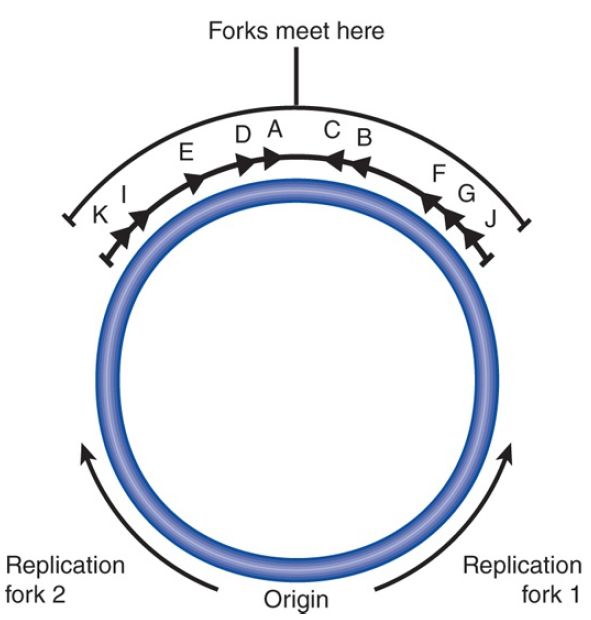

النبات

مواضيع عامة في علم النبات

الجذور - السيقان - الأوراق

النباتات الوعائية واللاوعائية

البذور (مغطاة البذور - عاريات البذور)

الطحالب

النباتات الطبية


الحيوان

مواضيع عامة في علم الحيوان

علم التشريح

التنوع الإحيائي

البايلوجيا الخلوية


الأحياء المجهرية

البكتيريا

الفطريات

الطفيليات

الفايروسات


علم الأمراض

الاورام

الامراض الوراثية

الامراض المناعية

الامراض المدارية

اضطرابات الدورة الدموية

مواضيع عامة في علم الامراض

الحشرات


التقانة الإحيائية

مواضيع عامة في التقانة الإحيائية


التقنية الحيوية المكروبية

التقنية الحيوية والميكروبات

الفعاليات الحيوية

وراثة الاحياء المجهرية

تصنيف الاحياء المجهرية

الاحياء المجهرية في الطبيعة

أيض الاجهاد

التقنية الحيوية والبيئة

التقنية الحيوية والطب

التقنية الحيوية والزراعة

التقنية الحيوية والصناعة

التقنية الحيوية والطاقة

البحار والطحالب الصغيرة

عزل البروتين

هندسة الجينات


التقنية الحياتية النانوية

مفاهيم التقنية الحيوية النانوية

التراكيب النانوية والمجاهر المستخدمة في رؤيتها

تصنيع وتخليق المواد النانوية

تطبيقات التقنية النانوية والحيوية النانوية

الرقائق والمتحسسات الحيوية

المصفوفات المجهرية وحاسوب الدنا

اللقاحات

البيئة والتلوث


علم الأجنة

اعضاء التكاثر وتشكل الاعراس

الاخصاب

التشطر

العصيبة وتشكل الجسيدات

تشكل اللواحق الجنينية

تكون المعيدة وظهور الطبقات الجنينية

مقدمة لعلم الاجنة


الأحياء الجزيئي

مواضيع عامة في الاحياء الجزيئي


علم وظائف الأعضاء


الغدد

مواضيع عامة في الغدد

الغدد الصم و هرموناتها

الجسم تحت السريري

الغدة النخامية

الغدة الكظرية

الغدة التناسلية

الغدة الدرقية والجار الدرقية

الغدة البنكرياسية

الغدة الصنوبرية

مواضيع عامة في علم وظائف الاعضاء

الخلية الحيوانية

الجهاز العصبي

أعضاء الحس

الجهاز العضلي

السوائل الجسمية

الجهاز الدوري والليمف

الجهاز التنفسي

الجهاز الهضمي

الجهاز البولي


المضادات الميكروبية

مواضيع عامة في المضادات الميكروبية

مضادات البكتيريا

مضادات الفطريات

مضادات الطفيليات

مضادات الفايروسات

علم الخلية

الوراثة

الأحياء العامة

المناعة

التحليلات المرضية

الكيمياء الحيوية

مواضيع متنوعة أخرى

الانزيمات
Termination of Replication
المؤلف:
JOCELYN E. KREBS, ELLIOTT S. GOLDSTEIN and STEPHEN T. KILPATRICK
المصدر:
LEWIN’S GENES XII
الجزء والصفحة:
6-4-2021
2046
Termination of Replication
KEY CONCEPT
- The two replication forks usually meet halfway around the circle, but there are ter sites that cause termination if the replication forks go too far.
Sequences that are involved with termination are called ter sites. A ter site contains a short, ~23-bp sequence. The termination sequences are unidirectional; that is, they function in only one orientation. The ter site is recognized by a unidirectional contrahelicase (called Tus in E. coli and RTP in B. subtilis) that recognizes the consensus sequence and prevents the replication
fork from proceeding. The E. coli enzyme acts by antagonizing the replication helicase in a directional manner by direct contact between the DnaB helicase and Tus. Deletion of the ter sites does not, however, prevent normal replication cycles from occurring, although it does affect segregation of the daughter chromosomes.
Termination in E. coli has the interesting features shown in FIGURE 1. The two replication forks meet and halt in a region approximately halfway around the chromosome from the origin. In E. coli, two clusters of five ter sites each, including terK, -I, -E, -D,and -A on one side and terC, -B, -F, -G, and -H on the other, are located ~100 kb on either side of this termination region. Each set of ter sites is specific for one direction of fork movement; that is, each set of ter sites allows a replication fork into the termination region but does not allow it out the other side. For example,replication fork 1 can pass t hrough terC and terB into the region but it cannot continue past terE, -D, and -A. This arrangement creates a “replication fork trap.” If, for some reason, one fork is delayed so that the forks fail to meet in the middle, the faster fork will betrapped at the distal ter sites to wait f or the slower fork.
The trapping of the two replication forks in ter leads to transient over-replication. This must be followed by trimming and resection. The two forks must then be joined in a process resembling doublestranded break repair.
The situation is different in eukaryotes because of their linear chromosomes with multiple replicons.

FIGURE 1. Replication termini in E. coli are located in a regionbetween two sets of ter sites.
 الاكثر قراءة في مواضيع عامة في الاحياء الجزيئي
الاكثر قراءة في مواضيع عامة في الاحياء الجزيئي
 اخر الاخبار
اخر الاخبار
اخبار العتبة العباسية المقدسة

الآخبار الصحية















 قسم الشؤون الفكرية يصدر كتاباً يوثق تاريخ السدانة في العتبة العباسية المقدسة
قسم الشؤون الفكرية يصدر كتاباً يوثق تاريخ السدانة في العتبة العباسية المقدسة "المهمة".. إصدار قصصي يوثّق القصص الفائزة في مسابقة فتوى الدفاع المقدسة للقصة القصيرة
"المهمة".. إصدار قصصي يوثّق القصص الفائزة في مسابقة فتوى الدفاع المقدسة للقصة القصيرة (نوافذ).. إصدار أدبي يوثق القصص الفائزة في مسابقة الإمام العسكري (عليه السلام)
(نوافذ).. إصدار أدبي يوثق القصص الفائزة في مسابقة الإمام العسكري (عليه السلام)


















